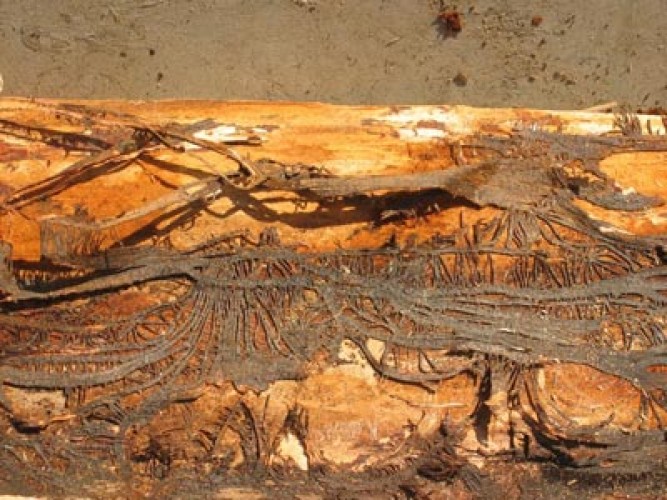Reader Karen Jackson was loading her woodstove when this piece of bark fell off a log. The underside was covered in lacy designs. What caused these patterns?
Answer
Armillaria mellea, aka shoestring root rot.
The dark, straplike fungi on the bark are the rhizomorphs of armillaria; they’re sort of stringy looking, hence the common name: shoestring root rot. Most fungi can only deploy itsy bitsy spores, but armillaria can ship out all kinds of chemicals via these long “shoe laces,” including chemicals such as phenol oxidases that break down phenols. Foresters dread it – it kills trees, often entering through wounds in the trunks caused by skidders and tractors – but wild food foragers are quite fond of it. Armillaria’s fruiting bodies, called honey mushrooms, are delicious.
This week’s contest winner was Jim White of Shaftsbury, VT


